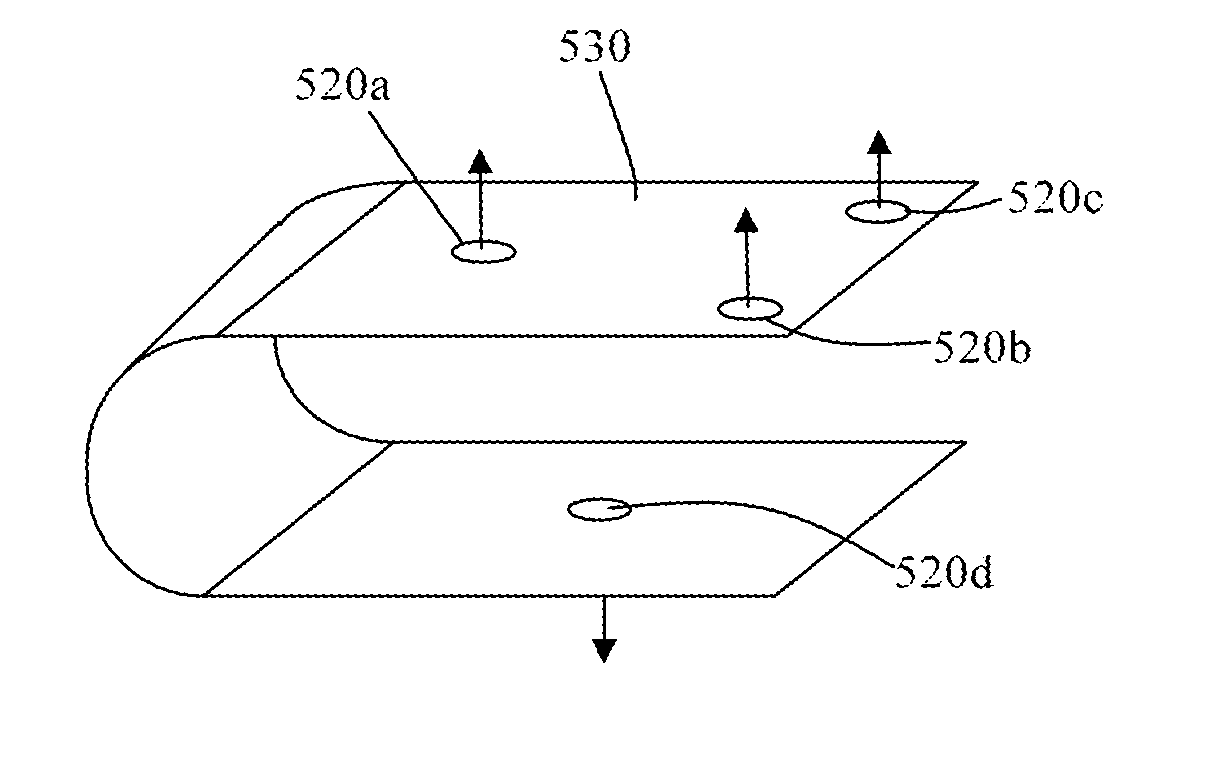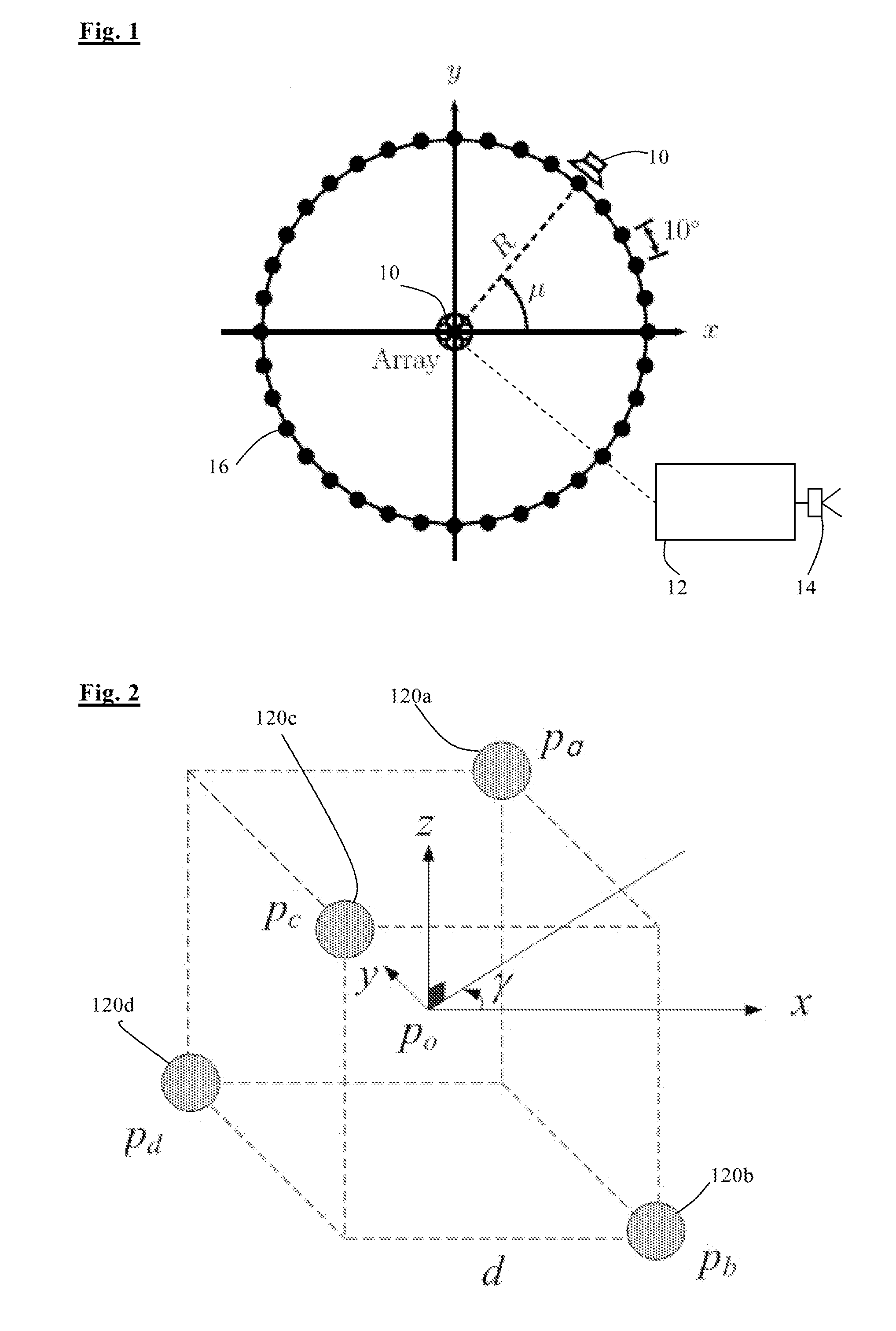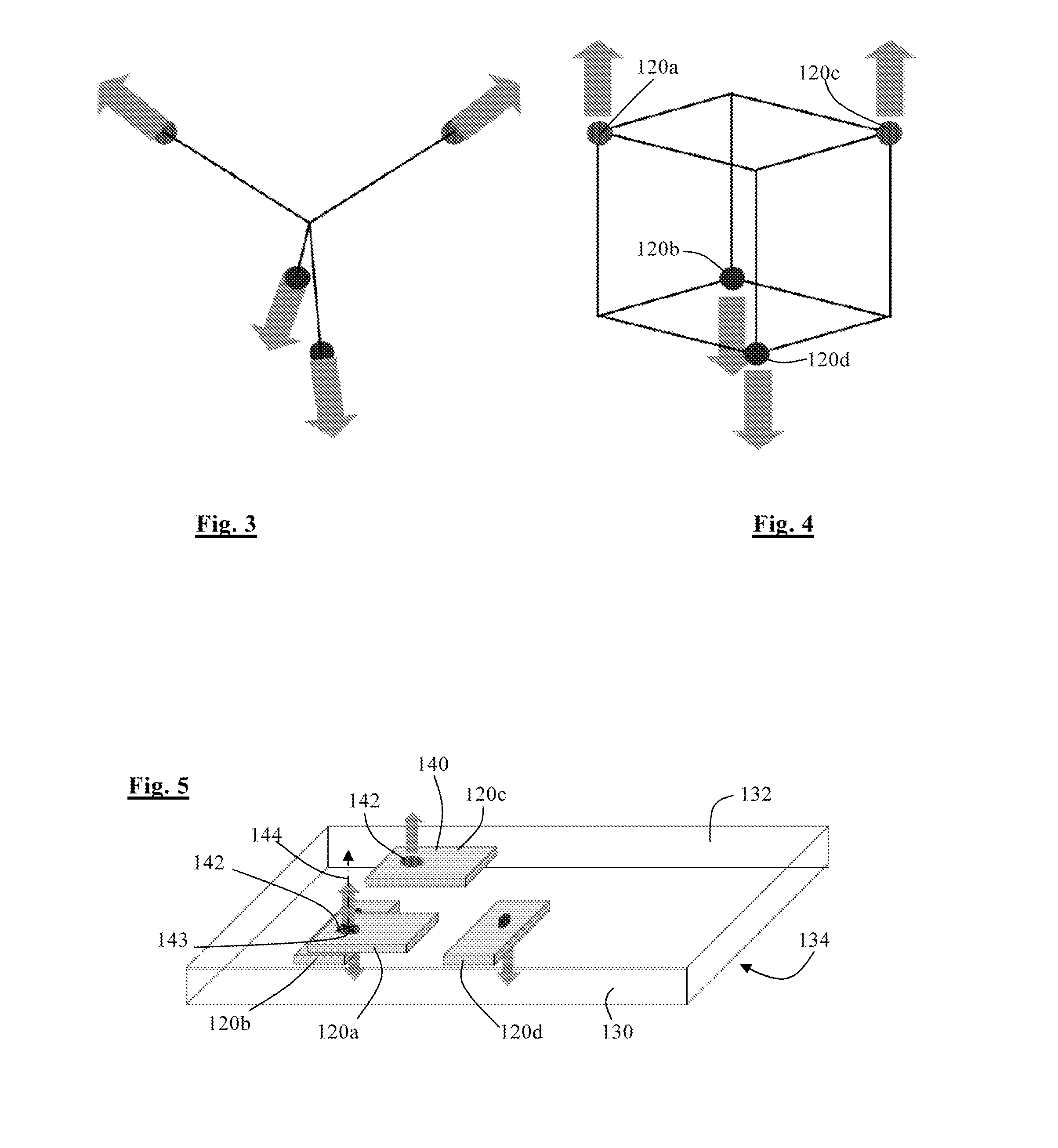Acoustic source separation
a technology of acoustic source and acoustic source, which is applied in the direction of loudspeakers, microphone structural associations, mouthpiece/microphone attachments, etc., can solve the problems of inability to easily manufacture using the production techniques employed, not well suited to many consumer applications, and high manufacturing costs
- Summary
- Abstract
- Description
- Claims
- Application Information
AI Technical Summary
Benefits of technology
Problems solved by technology
Method used
Image
Examples
first embodiment
[0045]Referring to FIG. 1, an audio source separation system according to the invention comprises a microphone array 10, a processing system, in this case a personal computer 12, arranged to receive audio signals from the microphone array and process them, and a speaker system 14 arranged to generate sounds based on the processed audio signals. The microphone array 10 is located at the centre of a circle of 36 nominal source positions 16. Sound sources 18 can be placed at any of these positions and the system is arranged to separate the sounds from each of the source positions 16. Clearly in a practical system the sound source positions could be spaced apart in a variety of ways.
[0046]Referring to FIG. 2, the microphone array 10 comprises four microphones 120a, 120b, 120c, 120d placed at positions which correspond to the four non-adjacent corners of a cube of side length d. This geometry forms a tetrahedral microphone array.
[0047]Let us consider a plane wave arriving from the direct...
second embodiment
[0064]Referring to FIG. 6, in the invention, the four microphones 220a, 220b, 220c, 220d are again all mounted on a common support member 230, but in this case the support member 230 is in the form of a flexible strip of sheet material. The microphones are all mounted on the same side 232 of the strip 230, but the first pair of microphones 220a, 220c is mounted on a first part 230a of the strip, and the second pair of microphones 220b, 220d is mounted on a second part 230b of the strip. The strip 230 is folded so that the two parts 230a, 230b are parallel to each other, with the side 230 on which the microphones are mounted being on the outside so that the two pairs of microphones face away from each other. The final spacing between the two parts 230a, 230b of the strip 230 is such that the diaphragm centres in the four microphones are equidistant from each other as in the previous embodiment. Referring to FIG. 6a, this can be achieved by folding the support member 230 around a rigi...
PUM
 Login to View More
Login to View More Abstract
Description
Claims
Application Information
 Login to View More
Login to View More - R&D
- Intellectual Property
- Life Sciences
- Materials
- Tech Scout
- Unparalleled Data Quality
- Higher Quality Content
- 60% Fewer Hallucinations
Browse by: Latest US Patents, China's latest patents, Technical Efficacy Thesaurus, Application Domain, Technology Topic, Popular Technical Reports.
© 2025 PatSnap. All rights reserved.Legal|Privacy policy|Modern Slavery Act Transparency Statement|Sitemap|About US| Contact US: help@patsnap.com



